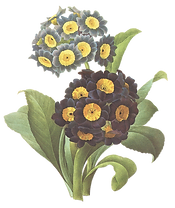When West meets East
- Cynthia Thomas
- May 24, 2018
- 4 min read
Long have the stark difference between the Western and Eastern worlds been in existence. Even the art of floral arranging is as different as night and day.
Here in the States, we like our flowers luscious, loud and plentiful. We tend to be most influenced by the Victorian Era of mass and effusive style. I am reminded, a little, of the mirror in our politicians as well.
In the East, the floral artistry is much more sparing. Following strict guidelines, creating space – not filling it, and holding one’s tongue are all hallmarks of the Japanese style known as Ikebana. Theirs is world of subtleties. And it is seen in their stark leadership, too.
How interesting to see what will become of the meeting next month when (and if) West meets East at the Korean summit.
Perhaps, we would do well to take a hint from the ancient ‘living flower/arrangement’ style – the school of Ikebana.
The first goal, according to Marjorie Bauman, who is a certified Ikebana teacher and an experienced psychotherapist, is to find inner peace in nature. Speaking to the women of the Belvoir Garden Club, she encourages her students to go to nature when stressed. Through the art of Ikebana one interacts with living materials in such a way as to find balance and mental clarity.
What a thought for our busy, hectic, twittery world?
Rather than impose our will, the student of Ikebana strives to learn from and bend with its materials. Often simple in elements, the whole presents a complete picture. Marjorie explains that in the discipline she is trained, Sogetsu Ikebana, every design has three elements: Shin, Soe and Hikae; representing Heaven, Humanity and Earth respectively.
While there are many rules that govern the true schools of Ikebana, including dictating the height of the stems, the types of containers, and even the angles at which stems can be placed, don’t let that dissuade you from trying your hand at it.
Here are a few guidelines to get you started:
Shin (heaven) – branch material, tallest element, should have powerful lines
Soe (humanity) – branch or strong material, often ¾ height of Shin
Hikae (earth) – stemmed flower(s), most important and often corrected element by a teacher, Sensai
As Marjorie worked with the materials she brought, it was amazing to see her transform the pieces right before our eyes. The Bird of Paradise flowers that she had were not yet opened. She slit the outside husk and literally opened the flower as you would a banana – taking care, of course, to gently coax the flower from its sheath.
Her first design is referred to as Moribana, and is the most basic of designs. Often placed in a low container, this style of design is particularly suited for a foyer placement. Once she got the Shin and the Soe elements (in this case she used the strong lines of the Bird of Paradise flower) she showed us a trick with variegated aspidristra. To create a flowing line, she folded over the beautiful leaf* and stapled it together! Yes, stapled. While there may be more elegant solutions, Marjorie said its okay to problem solve expediently as well. She placed all of her elements in a “frog” pin in the base of the container. Frogs look like spiky pin cushions and typically are a heavy metal disk that can be placed in any container and reused again. The frog holds the flowers and branches well.
*Aspidistra elatior is common worldwide as a foliage house plant that is very tolerant of neglect. It and other species can also be grown in shade outside, very much like a hosta.
The next design she demonstrated is known as Nagerie and is a vertical arrangement. Marjorie had a wonderful clay pot she used that was made by a potter whose style is to replicate nature. As Marjorie spoke of the use of branches in Ikebana, she worked her hands along the line of a myrtle branch and twisted it ever so slightly. The warmth and love she conferred to the branch is part of the overall experience, she explained.
Marjorie then measured the branch to be three fourths of the Shin and cut the stem under water at an angle, thereby increasing the surface space for the branch to uptake water and last longer.
In her final arrangement, Marjorie explained that once harmony is learned it can be achieved in Freestyle arrangements. She artfully placed a long branch and one flower in a beautiful vase – that she had purchased in Japan – creating an assymetrical, horizontal arrangement that was instantly appealing.
Marjorie says to let the flowers inspire you. Their form might suggest a season, a landscape or a haiku. In an interesting ‘how to’ article on Make.com, it says, “Finding this direction and letting the form of the blossom or stem guide you is the heart of Ikebana. Don’t get caught up in the flowers themselves, rather let your mind flow with the feelings that your branches and flowers evoke. Often the awkward bend in the branch is the most beautiful part, but you might have to remove leaves or offshoots to see it.”
Conventional beauty and colors are the Western way. If we are to learn from Ikebana, we must look beyond the obvious and to the heart. While the outcome is certainly considered, the joy is in the journey.
If you would like more information about Marjorie or live in the Northern Virginia area and would like to attend her June 3 workshop in Old Town, Alexandria, write to her at: mbaumanlpc@gmail.com



































Comments